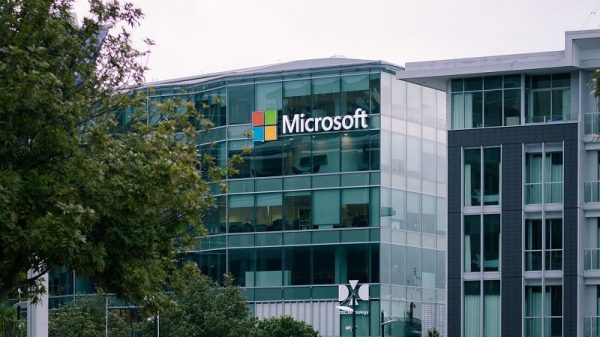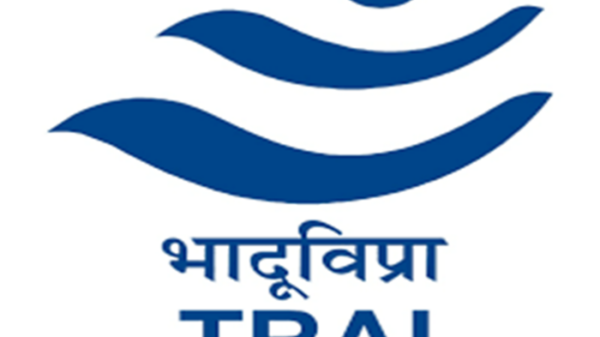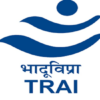In September 2022, the Reserve Bank of India (RBI) released guidelines to regulate digital lending such as lending through online platforms and mobile apps. The central bank, on February 14, clarified many provisions in these guidelines by answering some of the frequently asked questions (FAQs).
Summary: What Are RBI’s New Rules For Digital Lending Apps And Service Providers?
Why does this matter: Back when the guidelines were issued, there was some confusion around a few aspects: are payment aggregators not allowed to facilitate a loan transaction since the lender has to directly deposit money into the borrower’s account; what does this mean for buy-now-pay-later products where merchants (and not the borrower) get the proceeds from a loan; are credit card EMIs covered under the guidelines, etc. RBI has attempted to clarify such questions. Separately, these FAQs are being released at a time when the Indian government has been clamping down on predatory digital lending apps.
FAQs don’t have legal backing: While the information comes directly from RBI, FAQs don’t carry the same legal backing as the guidelines themselves. Companies that choose to rely on the FAQs should therefore do so with caution.
STAY ON TOP OF TECH POLICY: Our daily newsletter with top stories from MediaNama and around the world, delivered to your inbox before 9 AM. Click here to sign up today!
What issues has RBI clarified?
1. Can the services of Payment Aggregators (PA) be used for loan disbursals and repayments: PAs only offering payment aggregating services do not fall under the ambit of the guidelines and can continue to play a role in loan disbursal and repayment, but any PA that is also acting as a lending service provider (LSP) will fall under the guidelines. “The principle underlying the Digital Lending Guidelines is that an LSP should not be involved in the handling of funds flowing from the lender to the borrower or vice versa,” RBI clarified.
2. How can recovery agent details be shared at the time of loan sanction: The guidelines require the lender to share details of the recovery agency when sanctioning a loan. But since recovery agents are assigned by the lenders only when loans turn delinquent, one of the questions was how can the lender specify the details at the time of sanction. RBI clarified that “at the time of sanction of loan, the borrower may be conveyed the name of empaneled agents authorized to contact the borrower in case of loan default,” and if “the loan turns delinquent and the recovery agent has been assigned to the borrower, the particulars of such recovery agent assigned must be communicated to the borrower through email/SMS before the recovery agent contacts the borrower for recovery.”
3. Entire loan process need not be done digitally to classify as digital lending: RBI clarified that the entire life cycle of a loan (customer acquisition, credit assessment, loan approval, disbursement, recovery, and associated customer service) does not have to be done digitally for the transaction to fall under the definition of digital lending. Even if some of the aspects are done in physical mode, the transaction will still be seen as digital lending because the definition considers if a loan is provided “largely by use of seamless digital technologies.”
4. Guidelines also applicable to corporate loans: In response to a question on “whether the Guidelines are also applicable for corporate including MSME loans,” the RBI responded that the guidelines are applicable to all transactions meeting the definition of digital lending.
5. Only consumer-facing lending providers must appoint grievance redressal officers: The guidelines state that regulated entities must ensure that they and the lending service providers (LSPs) engaged with them have a nodal grievance redressal officer to deal with digital lending-related complaints. RBI has now clarified that “only those LSPs which have an interface with the borrowers would need to appoint a nodal Grievance Redressal Officer.” The central bank also added that the “RE [Regulated Entity] shall remain responsible for ensuring resolution of complaints arising out of actions of all LSPs engaged by them.”
6. Credit card EMIs not covered, but credit cards loans and debit card EMIs covered: EMIs on credit cards will not be covered by the digital lending guidelines since they already fall under the Master Direction on Credit Card and Debit Card – Issuance and Conduct, 2022, RBI said. However, other loan products offered on credit cards which are not regulated by these directions fall under the digital lending guidelines and so do all loans offered on debit cards, including EMI programmes.
7. How to show APR for floating rate loans: The guidelines state that the all-inclusive cost of digital loans in the form of the Annual Percentage Rate (APR) should be disclosed to the borrowers upfront. But for floating rate loans, the interest rate changes over time, which means the APR will also change over time. “In case of floating rate loans, APR may be disclosed at the time of origination based on the prevailing rate as per the format of KFS (Key Fact Statement). However, as and when the floating rate changes, only the revised APR may be disclosed to the customer via SMS/e-mail each time the revised APR becomes applicable,” RBI clarified.
8. Recovery agents allowed to collect cash repayments if absolutely necessary: Since the guidelines require repayments to be directly deposited in the bank account of the lender, one of the questions was how can recovery agents then collect cash from borrowers of delinquent loans. “In case of delinquent loans, REs can deploy physical interface to recover loans in cash, where absolutely necessary. In order to afford operational flexibility to REs, such transactions are exempted from the requirement of direct repayment of loan in the RE’s bank account. However, any recovery by cash should be duly reflected in the borrower’s account and REs shall ensure that any fees, charges, etc., payable to LSPs are paid directly by them (REs) and are not charged by LSP to the borrower directly or indirectly from the recovery proceeds,” RBI clarified.
9. Repayment of loan by corporate employer need not come directly from borrower’s account: In situations where a loan has been disbursed directly to the bank account of the borrower, but the repayment is from the corporate employer, which deducts the EMI amount from the salary, such repayments need not come directly from the bank account of the borrower as required in other cases. The regulated entities (REs) should, however, “ensure that LSPs do not have any control over the flow of funds directly or indirectly in such transactions. It has also to be ensured that repayment is directly from the bank account of the employer to the RE.”
10. Not all service providers will be considered lending service providers: RBI clarified that not all service providers affiliated with a regulated entity for credit intermediation activities will be considered a Lending Service Provider (LSP). The definition of LSP only covers service providers that engage in digital lending transactions.
11. Insurance charges to be included in APR: It is mandatory to include insurance charges in the computation of Annual Percentage Rate (APR) “only for the insurance which is linked/integrated in loan products as these charges are intrinsic to the nature of such digital loans,” RBI stated.
12. Flow of funds cannot be controlled by a third party: The RBI simply stated “No” in response to a question asking “whether the flow of funds between the bank accounts of borrower and lender in a lending transaction can be controlled directly or indirectly by a third-party including LSP.”
13. Loan disbursal in co-lending transactions is exempt from direct disbursal rule: For co-lending transactions, the guidelines provide an exemption from direct disbursal to the bank account of the borrower as long as the flow of money is between regulated entities (REs). But it was not clear if this was only applicable to transactions undertaken for priority sector lending. RBI has now clarified that “the exemption can be extended to co-lending arrangements between REs for non-PSL loans subject to the condition that no third party other than the REs in a co-lending transaction should have direct or indirect control over the flow of funds at any point of time.”
14. Guidelines applicable to mobile banking apps and bank websites as well: In response to a question on “whether the Guidelines are also applicable to mobile banking apps/websites of banks where, as an additional feature, personal loans or loans against deposits are being offered on the applications,” the RBI reiterated that the guidelines are applicable to all digital loans offered over any digital platform that meets the definition of Digital Lending Apps (DLAs) as per the guidelines.
15. Penal charges can be levied on a lower amount, but the ceiling is the outstanding amount: The guidelines state that any penal interest or charges levied on the borrowers should only be based on the outstanding amount of the loan. One of the questions on this was whether penal interest or charges can be levied on a lower base. To this, RBI responded that “the amount under default shall act as the ceiling on which the penal charges can be levied.”
16. Need not annualise charges like cheque bounce or mandate failure: Cheque bounce or mandate failure charges, which are levied on a per occurrence basis, need not be annualised, but the charges must be disclosed separately in the Key Fact Statement (KFS) under “Details about Contingent Charges,” RBI stated.
17. Refund of processing fee not mandatory: In response to a question on whether the processing fees must be refunded if the customer exits the loan during the cooling-off period, RBI clarified that a “reasonable one-time processing fee can be retained if the customer exits the loan during the cooling-off period” as long as the same is disclosed to the customer upfront in KFS and has been included for the computation of APR.
18. NBFCs must continue to disclose the annualised rate of interest: RBI stated that Non-Banking Financial Companies (NBFCs) also need to disclose the annualised rate of interest to the borrowers as required under Fair Practices Code even if they are already disclosing APR in the Key Fact Statement (KFS).
This post is released under a CC-BY-SA 4.0 license. Please feel free to republish on your site, with attribution and a link. Adaptation and rewriting, though allowed, should be true to the original.
Update (16 February, 2:30 pm): Headline shortened for brevity
Also Read
- Summary: What Are RBI’s New Rules For Digital Lending Apps And Service Providers?
- Summary: RBI Report On Regulating Digital Lending And Curbing The Menace Of Predatory Lending Apps
- Explainer: Why India’s Digital Lending Industry Is Worried
- Whitelist Of Approved Digital Lending Apps Sent To App Stores: Finance Ministry





























